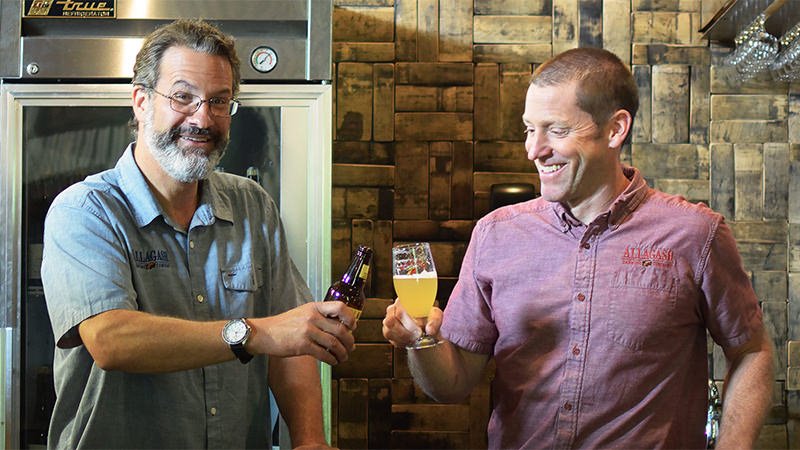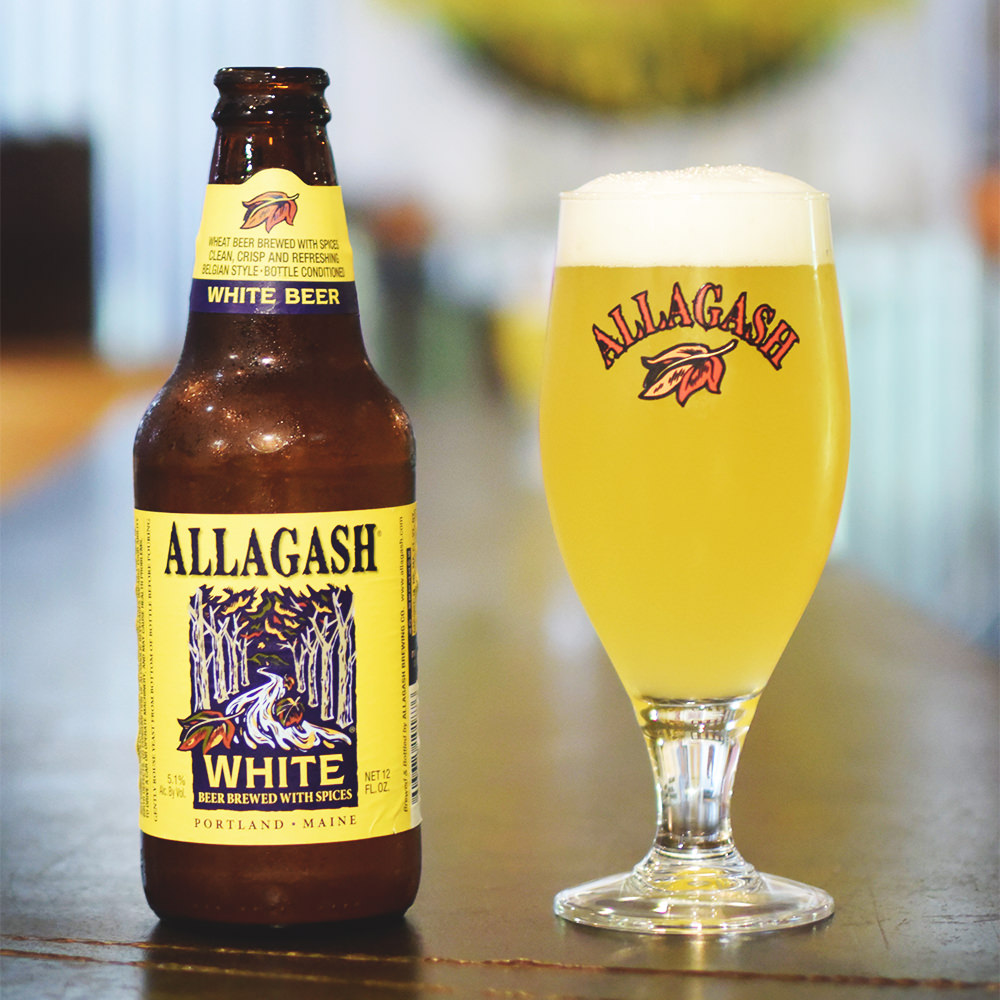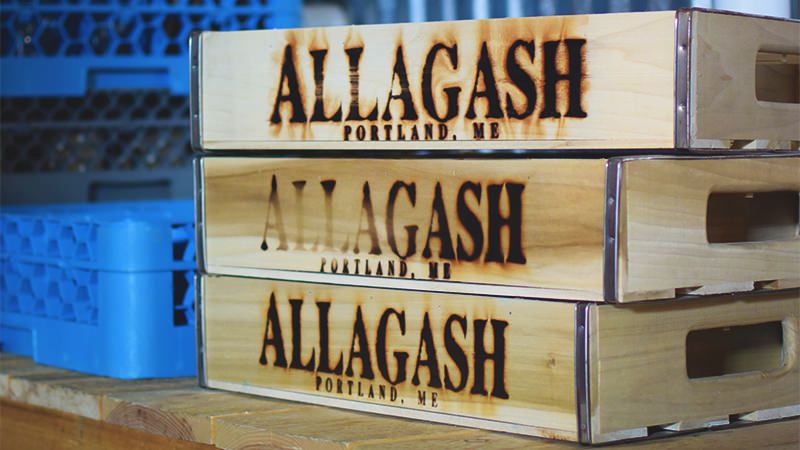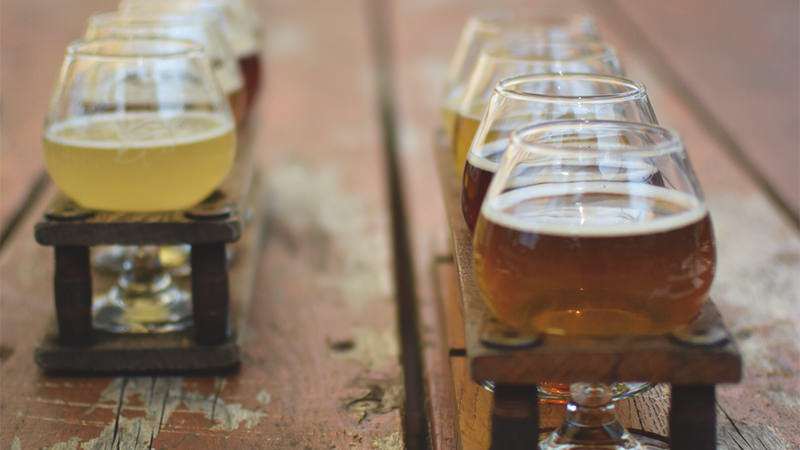
The current craft brewing craze is fueled by IPAs and flash-in-the-pan trends. But for 22 years, Allagash White, a Belgian White beer, has been defining a segment of the industry and proving that there’s more to American beer than hops and high alcohol. The first beer produced at Allagash Brewing Company in Portland, Maine in 1995, Allagash White remains the brewery’s top seller, accounting for around 80 percent of the beer the brewery makes.
So how did a Belgian White survive, then thrive, in the American craft beer scene? To find out, we spoke with Allagash’s founder Rob Tod; brewmaster Jason Perkins; Ned Wight, the first person Tod hired; and Dave Evans, the co-owner of The Great Lost Bear, one of Portland’s top beer bars. This is the oral history of Allagash White.

Rob Tod: It was the early ’90s and German styles, British styles, and Pacific Northwest pale ales were making their way back, but I wanted to do something different. Basically I figured since I was going to spend eight months building the brewery and my life running it, I didn’t see a point in brewing a beer that people could already get their hands on.
Rather than having someone design and build us a brand new system, I cobbled it together from mostly dairy tanks. I did a lot of the installation work like cutting the drainage trenches, doing a lot of the welding, plumbing, some electrical stuff myself.
Dave Evans: He invited us over while he was still experimenting with batches on a hot July or August day. We went over there and it was the best beer I’ve ever tasted in my life. But he still wasn’t satisfied with it at the time, and he was still running around with that old dairy equipment.
Tod: I brewed eight or so batches in a little 10-brew system, and then brewed two pilot batches on the full-scale system, and sold the third batch.
Ned Wight: I started in March of ’96, and at that time we were only making White and the dubble and we were brewing maybe every other week, kegs only and only in Portland.
Evans: It was a no-brainer to put it on. We were the first to pour it. Of course, he was the only person working there at the time, so he wasn’t putting that much out. But it was a long, steady climb.
Wight: There’s a good brewing scene here, good restaurant scene, and folks in Maine are really good about supporting local products. So that was a big part of what made Allagash go. If you’re not doing a mainstream product, you have to be pretty selective about home base.
It was a lot of fun getting folks to taste it because this doesn’t taste anything like the other stuff they were drinking then. Usually the first reaction was not understanding what a white beer was, and oftentimes they’d say, ‘You mean a wheat beer?’ and I’d be like, ‘Yeah, but it’s called a white.’
Tod: People hadn’t seen cloudy beer like this with authentic Belgian yeast strains and spice, so it was nice messaging with something unique. The downside was that it was impossible to sell.
Wight: English beer was king for craft so there was a lot of fined or filtered beer on the market, and we’d be at beerfests and hand somebody a glass of White and they’d be like, ‘What’s wrong with it?’
Tod:It’s a pretty big beer for a white beer. It’s full flavor, and has a lot of character. I didn’t want it to be viewed as a purely seasonal summer beer, which tended to be the case for wheat beers back in the ’90s. I wanted to do something that I felt like was refreshing enough to have a few of them on a hot Maine day, but also robust enough to drink on a cold Maine winter day.
It’s widely available now, though. It’s odd to think that 20 years ago we couldn’t give it away.
VinePair: Did you ever think there wasn’t a market for this?
Jason Perkins: Honestly, yeah. At all stages of the time I’ve been at Allagash I’ve absolutely loved working here. There’s been a number of challenging years for a variety of reasons, and one of those challenges was asking ourselves, ‘Can we continue to survive and grow as a business?’
I came on in 1999, which was several years into the Allagash time frame, but we were still tiny back then. I had brewed at a couple places for short stints, and I was familiar with the style because I was fortunate enough in college to spend a little time in Belgium. But at that time frame for craft beer in the U.S., I was definitely very much in the minority of people who knew and understood the style.
Tod: I’d pour samples and it would be cloudy, and people just looked puzzled and would say, ‘What’s wrong with it?’ Sometimes if they had pity for us they’d say, ‘I’ll put it on tap, but it’s not going to sell,’ and they were right.
I used to walk into accounts even 10 years after being in the business where I was pretty sure we had a tap line, and I would just cringe knowing there would be a very good chance we’d be off the line. It was 50-50. I can’t tell you how many times I’d walk in and be like, ‘Hey, how’s it doing?’ And they’d be like, ‘Well, it’s the second-worst-selling beer. Not the worst, it’s the second worst.’
We kept a lot of draft lines locally and I’d just go in and drink beer there and I think the bartenders kind of felt sorry for us.
Evans: It was slow growth.
Perkins: But I believed in the beer. Amidst all those stories of it not doing well, there were always signs of promise. I guess I had that faith that eventually it would catch, and luckily it did.
Tod: After 10 or so years of constantly pushing it finally got some momentum. I don’t think there was any one event, but around 2005 the beer finally started moving on its own. We were in 30 states by 2005 and we were doing such a small volume in each state that we needed that many states to support the business.
Since then we’ve retrenched into only about 17 states, but it’s still our flagship beer. It’s almost 80 percent of our production. In Maine, there are nearly 100 breweries in the state now and it’s more competitive then ever. Yet we just had our best year ever in Maine, percentage growth-wise, in our 22-year history. And most of it’s the White.
We turned the corner relatively rapidly when it got traction.
VinePair: How did you manage that kind of growth once things clicked?
Perkins: I think there can sometimes be a misconception out there that as a brewery or any kind of artisanal food producer grows, their quality strays or industrializes. There might be some legitimacy to that in some cases, but at Allagash, if anything, we have even more quality.
We have more influence on sourcing the hops, fresh coriander, and grain. And there’s better quality control. It’s better than it’s ever been, and I have no doubt that next year we’re going to be even better than we were this year.
Evans: I just had one two days ago and it tastes the same as it did that hot summer day in the ’90s. When he went to a much bigger brew house the first thing I asked him was, ‘what calculations are you using?’ He told me, ‘Believe me, we had to sewer a lot of this beer before we reached the right taste.’
Tod: This beer tastes the same as it did in late ’95. I still remember it like it was yesterday drinking it off the tank, but the big difference today is that it wasn’t consistent in the past.
Evans: It’s The Great Lost Bear’s most popular beer day in and day out by far, and it has been for the last 10 years. Rob comes in every once in a while and asks, ‘How are we doing?’ And I always say, ‘Don’t worry, you’re number one.’
There are so many breweries in Maine, everyone is fighting for that tap line. It’s hard for us to keep some beers up, a Sam Adams for instance. It just doesn’t sell.
Tod: It’s funny, the only thing I was worried about was that I wouldn’t like the beer. Because I can’t go out and sell something that I’m not passionate about. Not a day passes that I don’t drink a couple Whites.
VinePair: What’s it like being such an influential brewery?
Perkins: We get questions from brewers and I’m always more than happy to respond. In some ways, though, the 20-plus years we’ve been in business doesn’t seem like that long to me and I feel awkward when someone makes a comment that we’ve influenced them.
We’ve had this community of brewers and they are always so helpful. So now it’s just ingrained in what we do and we were just happy to do the same because there were breweries who would help us tackle problems.
Tod: I appreciate every line and every single time someone orders a beer. We don’t take it for granted and we don’t take for granted when someone says we’ve been influential. It’s still a surprise to me when I see someone order the beer, or we get a new draft line, or [someone] says we’ve been influential.
Who knows? This industry is changing so much now, but given the fact that White is continuing to grow and I’m continuing to love it and enjoy it, I would guess that it will continue to be our flagship.
Perkins: I have no doubt that we’ll continue to innovate, but it would have to be a miraculous growth pattern for any of those new beers to get anywhere near what White’s doing for us. I personally have no problem with that at all.


